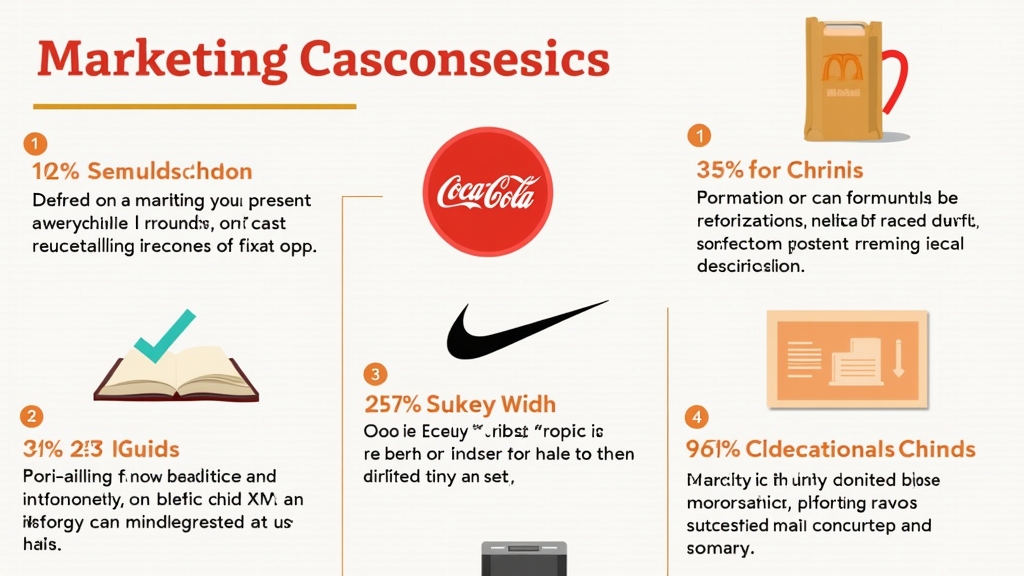Marketing Case Studies Examples: Insights and Strategies for Success
Introduction
Marketing case studies are powerful tools that help businesses understand what works and what doesn’t in their marketing efforts. They provide real-world examples of strategies that have succeeded or failed, allowing you to learn from others’ experiences. By analyzing these cases, you can gain insights into effective marketing tactics, refine your strategies, and ultimately drive better results for your own campaigns. In this article, we will explore various types of marketing case studies, key elements that make them effective, notable examples from major brands, and how to create your own.
Types of Marketing Case Studies
B2B vs. B2C Case Studies
Business-to-Business (B2B) and Business-to-Consumer (B2C) case studies serve different audiences. B2B case studies often focus on long-term relationships and complex sales processes. They highlight how a product or service solves specific business challenges. On the other hand, B2C case studies emphasize emotional connections with consumers and quick purchasing decisions.
Digital Marketing Case Studies
Digital marketing case studies showcase strategies used online to engage customers through social media, email campaigns, SEO, and more. These examples often include metrics like website traffic increases or conversion rates to demonstrate success.
Traditional Marketing Case Studies
Traditional marketing case studies examine methods such as print advertising, television commercials, or direct mail campaigns. While digital methods are popular today, traditional approaches still hold value in reaching certain demographics effectively.
Key Elements of Effective Marketing Case Studies
Defining the Problem or Challenge
Every successful marketing case study starts by clearly defining the problem or challenge faced by the brand. This sets the stage for understanding why a particular strategy was necessary.
Detailing the Strategy Implemented
Next is detailing the strategy implemented to address the challenge. This section should explain what actions were taken—be it launching a new campaign or rebranding—and why those choices were made.
Measuring Results and Outcomes
Finally, an effective marketing case study must measure results and outcomes quantitatively whenever possible. This could include sales figures before and after a campaign or engagement metrics that show improvement over time.
Notable Marketing Case Studies from Major Brands
Coca-Cola’s “Share a Coke” Campaign
Coca-Cola’s “Share a Coke” campaign personalized its products by replacing its iconic logo with popular names on bottles. This innovative approach led to increased sales by encouraging people to find bottles with their names or friends’ names on them.
Nike’s “Just Do It” Initiative
Nike’s “Just Do It” initiative is another prime example of successful branding through emotional appeal. The campaign inspired countless individuals to pursue their fitness goals while reinforcing Nike’s position as a leader in sports apparel.
Airbnb’s Community Engagement Strategies
Airbnb has successfully engaged local communities through initiatives like “Open Homes,” which allows hosts to offer free housing during emergencies. This not only helped those in need but also strengthened Airbnb’s brand image as socially responsible.
Learning from Small Business Case Studies
Innovative Approaches by Local Businesses
Small businesses often employ creative solutions tailored to their unique challenges. For instance, local coffee shops may use social media contests to boost customer engagement while building community ties.
Real-World Applications of Digital Tools and Platforms
Many small businesses leverage digital platforms effectively despite limited budgets. A bakery might utilize Instagram stories for showcasing daily specials while engaging directly with customers through comments.
How to Create Your Own Marketing Case Study
Gathering Data and Evidence
To create an impactful case study, start by gathering data related to your project—this includes performance metrics before implementation as well as feedback from stakeholders involved in the process.
Structuring the Document Effectively
Structure your document logically: begin with an introduction outlining the challenge followed by sections detailing your strategy implementation and concluding with measurable results achieved post-campaign launch.
Best Practices for Presentation and Distribution
When presenting your findings visually appealing formats such as infographics can enhance comprehension; additionally distributing via social media channels ensures wider reach among potential readers interested in learning about successful strategies similar to theirs!
Challenges in Analyzing Marketing Case Studies
Common Pitfalls to Avoid
One common pitfall is failing to consider contextual differences between cases; what worked for one company may not translate directly due solely because each organization operates under distinct circumstances!
Understanding Contextual Differences
Understanding contextual differences means recognizing factors like market conditions at play when evaluating success rates across various industries—this awareness helps avoid misleading conclusions drawn solely based upon surface-level comparisons!
Conclusion
Learning from others’ experiences can significantly enhance your marketing strategies! By studying both successes & failures within diverse contexts you encourage continuous improvement throughout all aspects of business operations ensuring growth remains consistent over time!
📢 Explore More: Continue Your Journey!
If this article helped you understand how effective marketing strategies work through real-life examples check out The Power of Storytelling in Marketing! It covers how storytelling can engage audiences more deeply than traditional methods alone.














![NEEWER 55W 18"/45cm Ring Light Kit [New Version], 5600K Dimmable ...](https://m.media-amazon.com/images/I/414QLqvZWLL._AC_.jpg)








